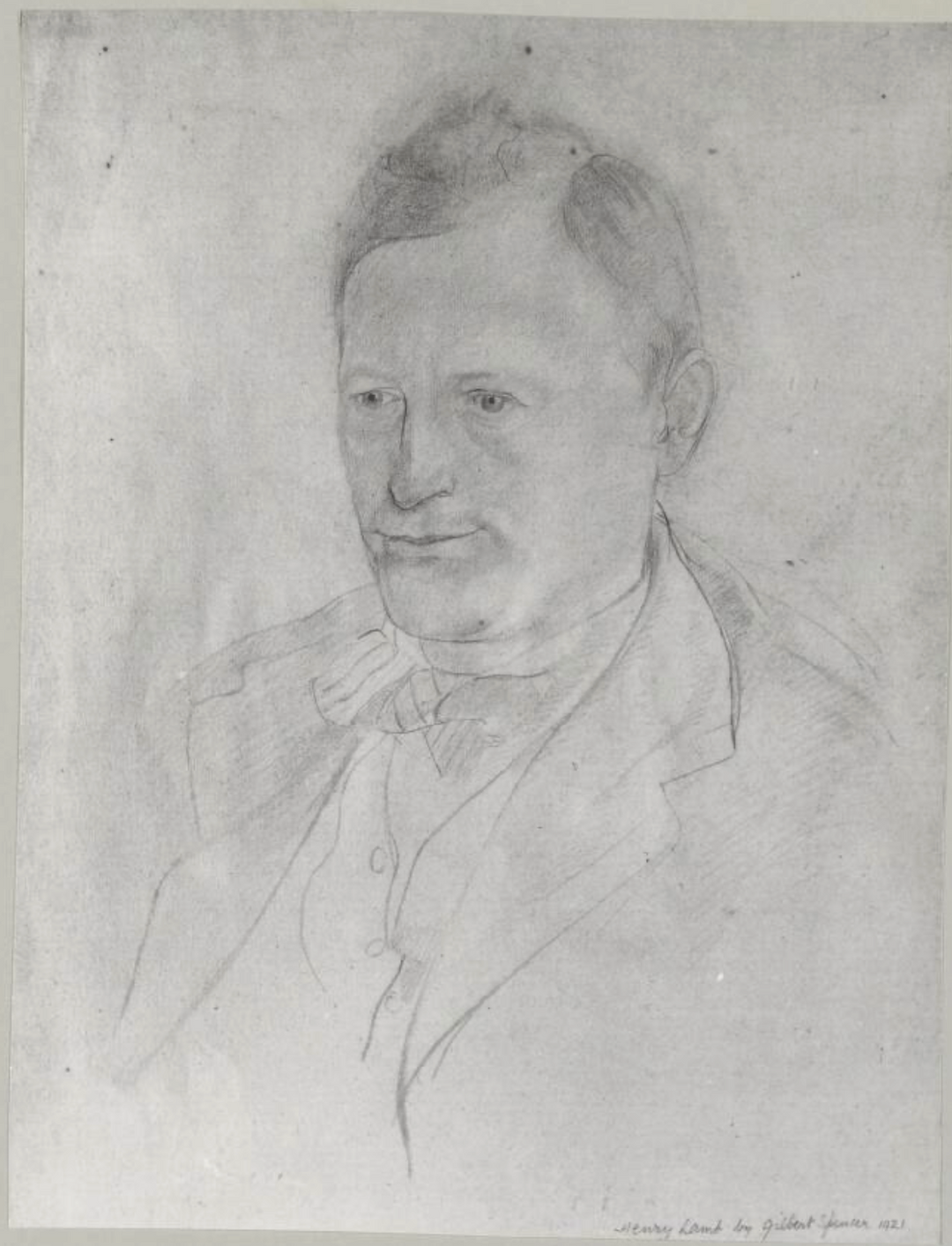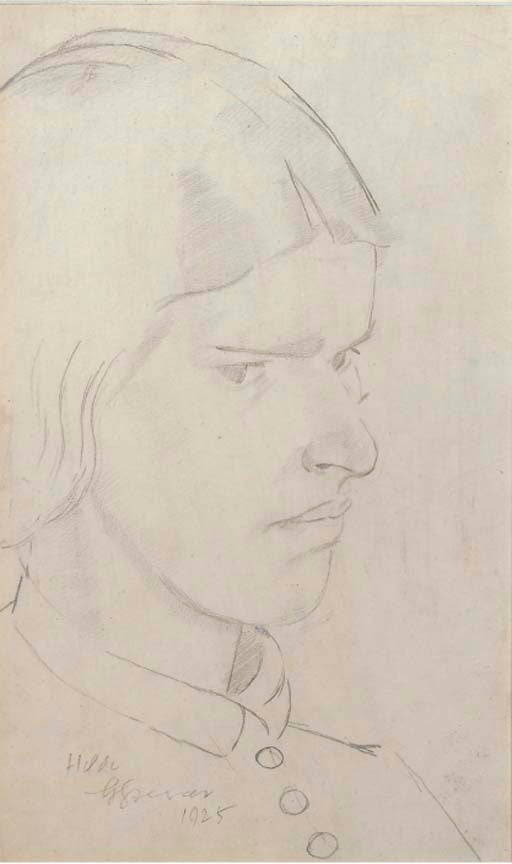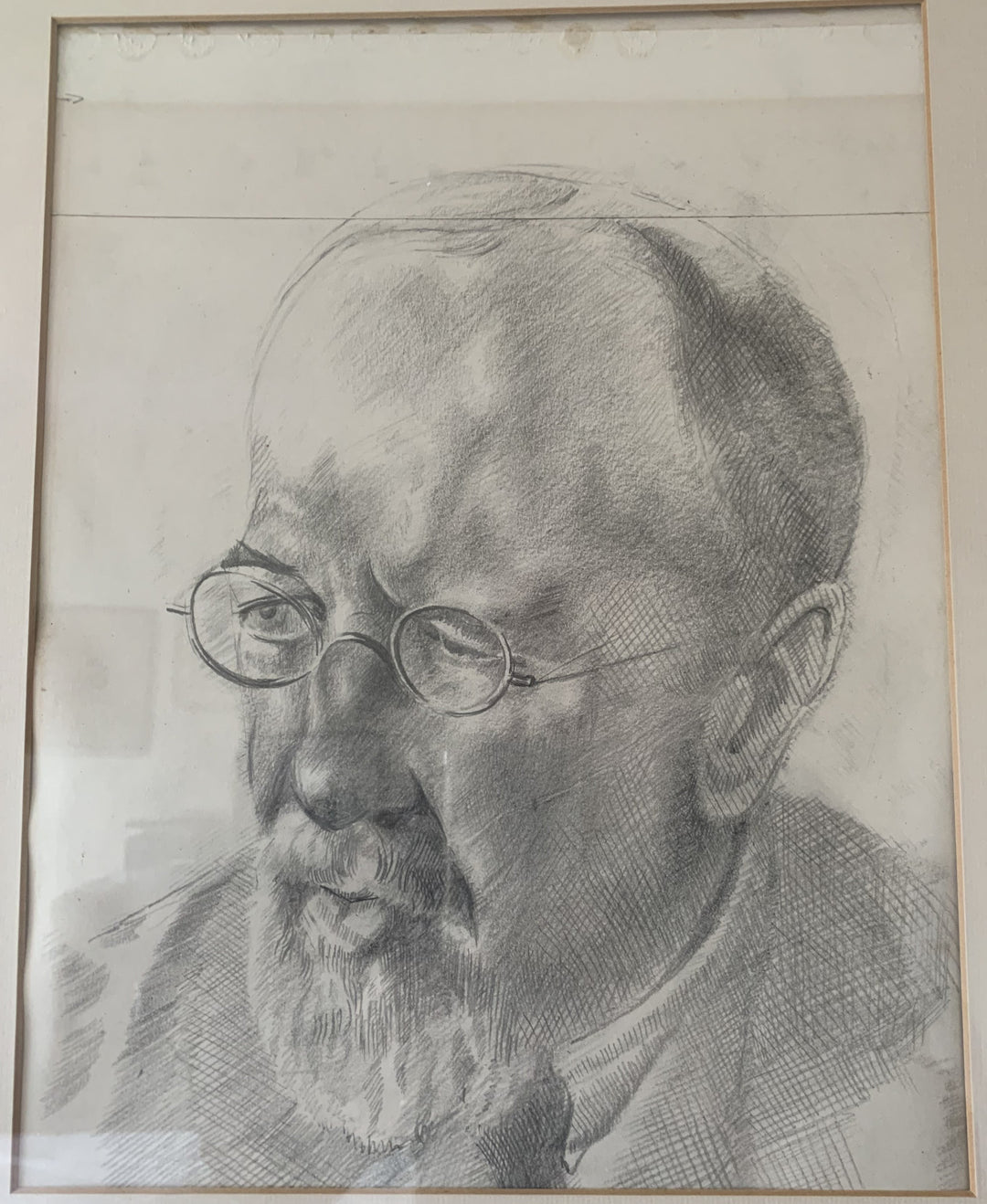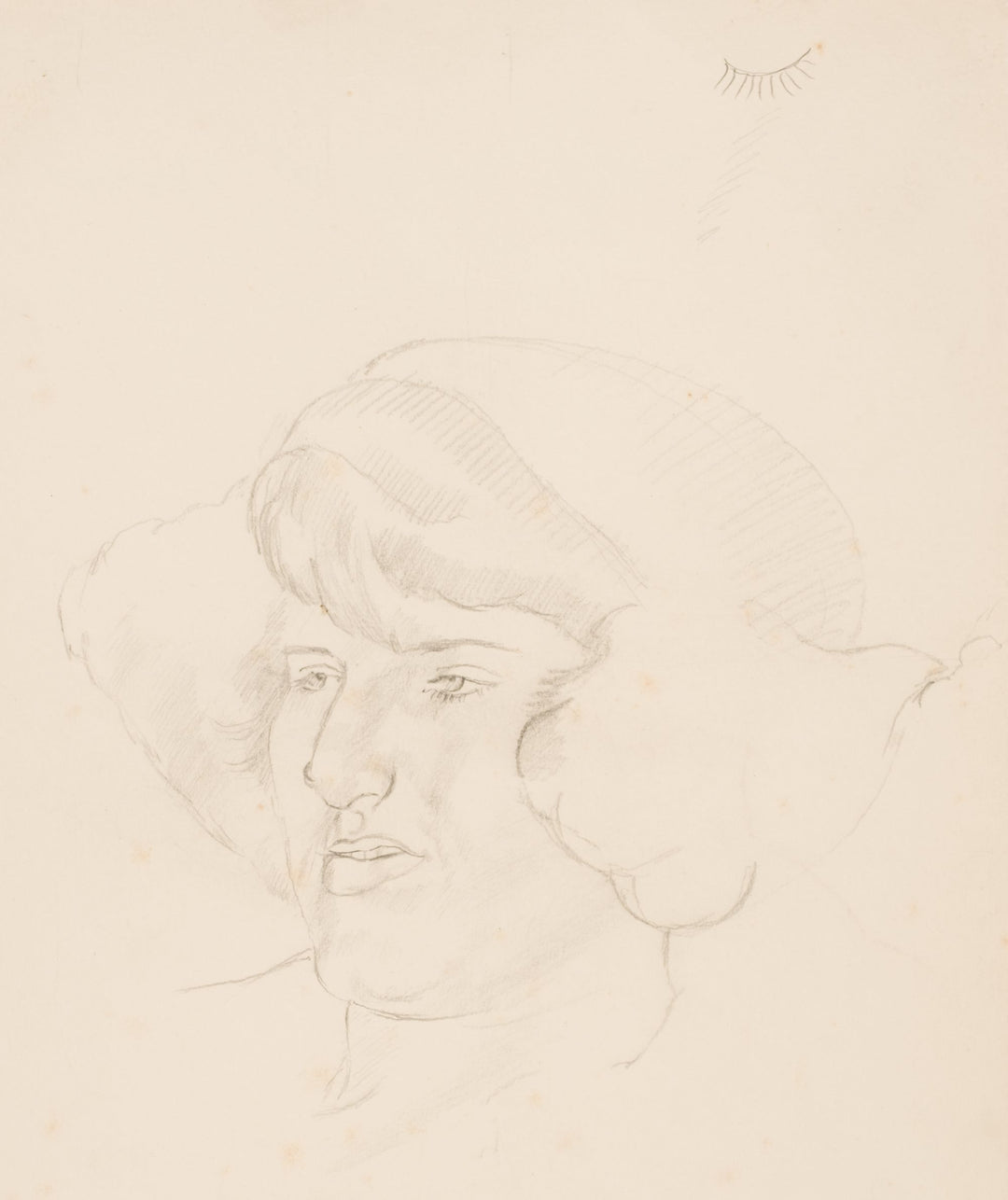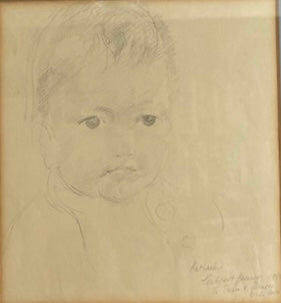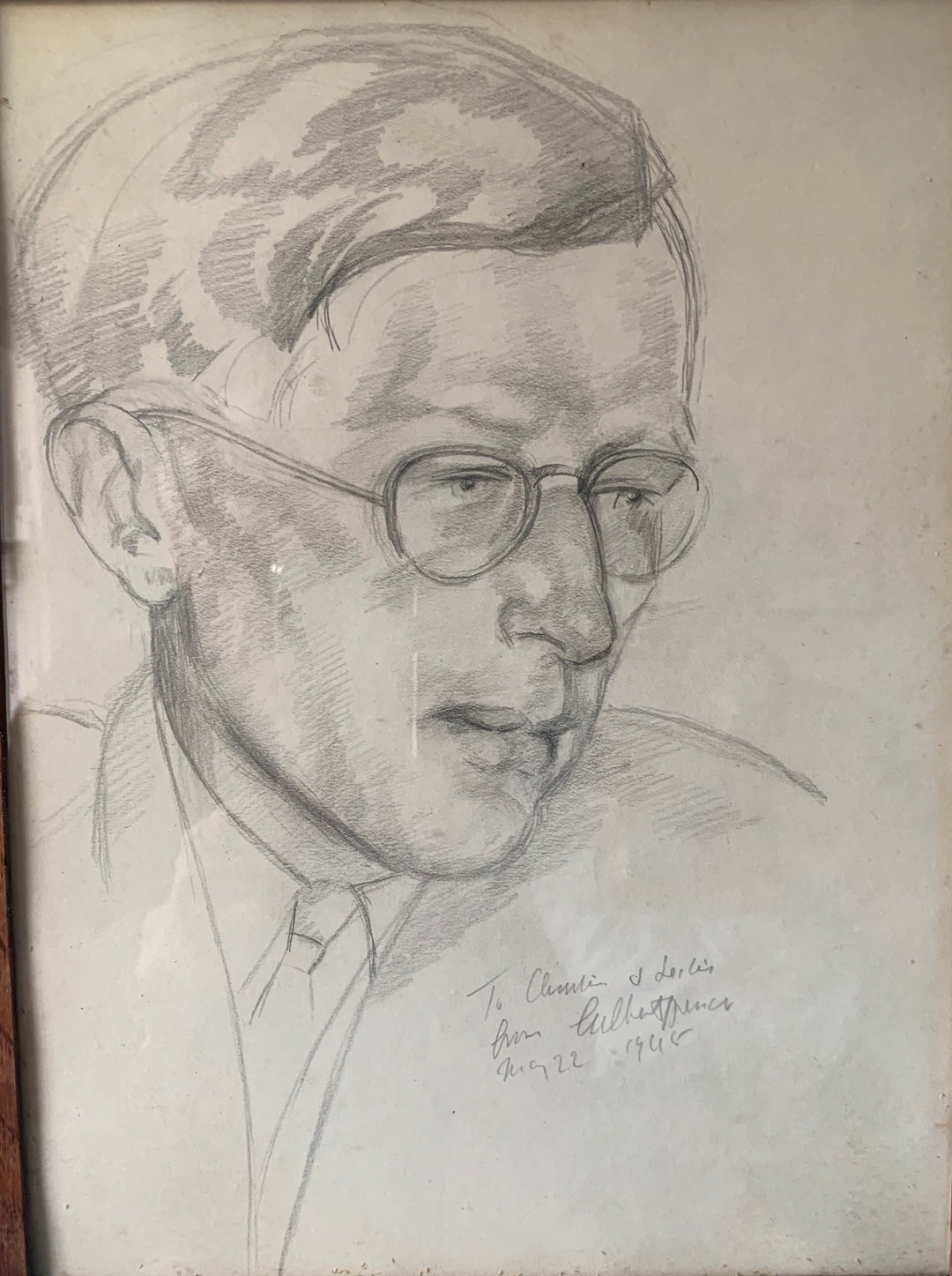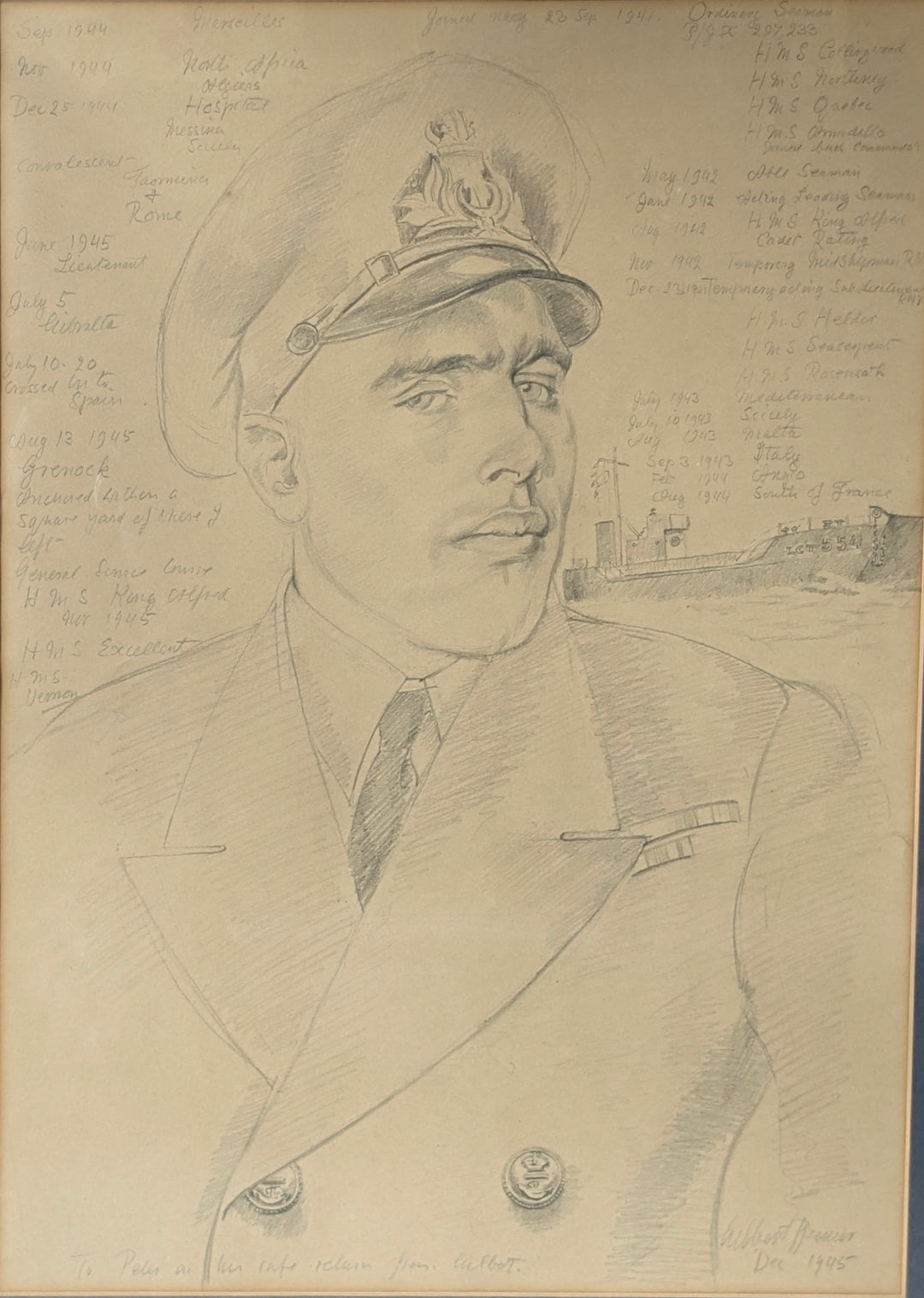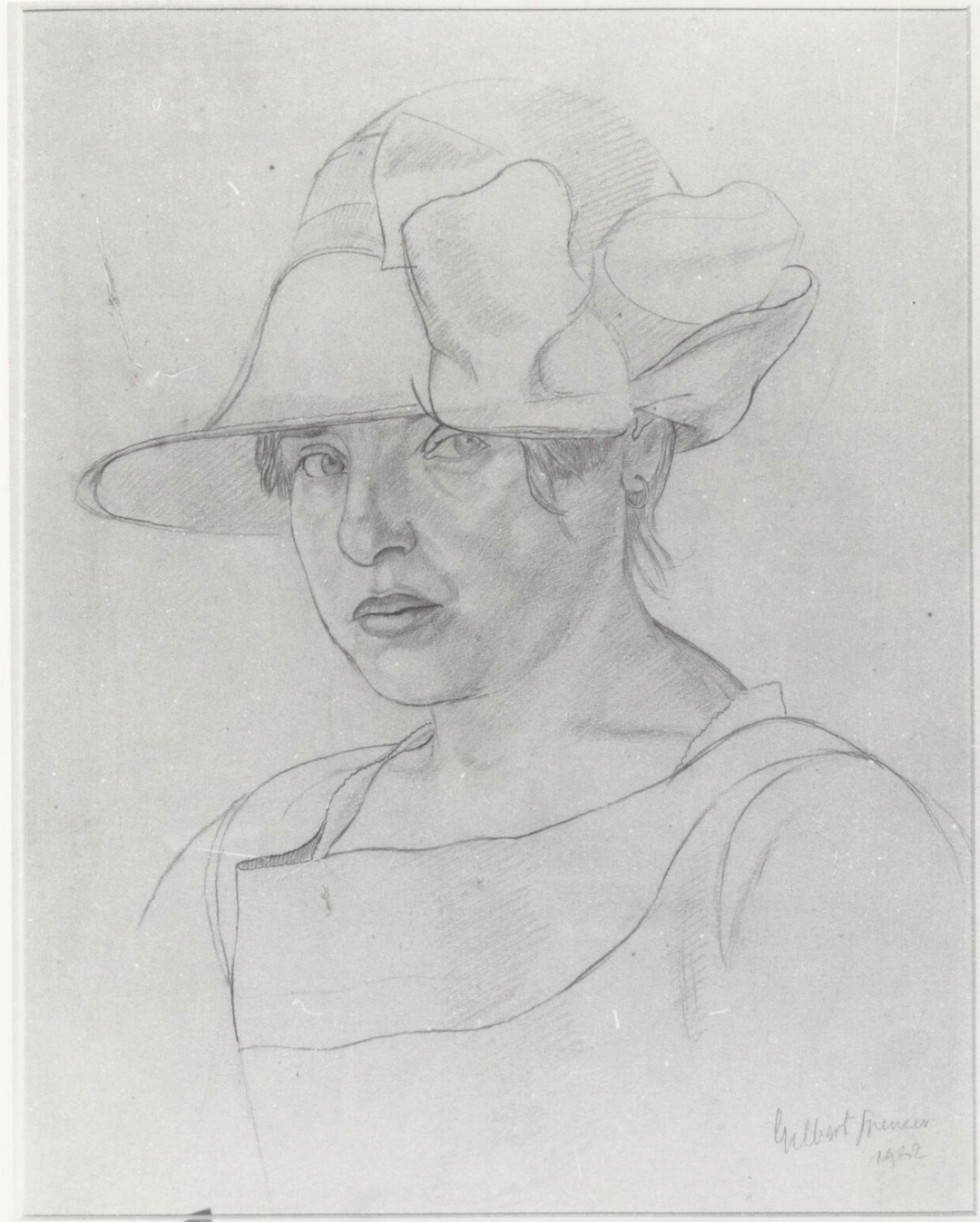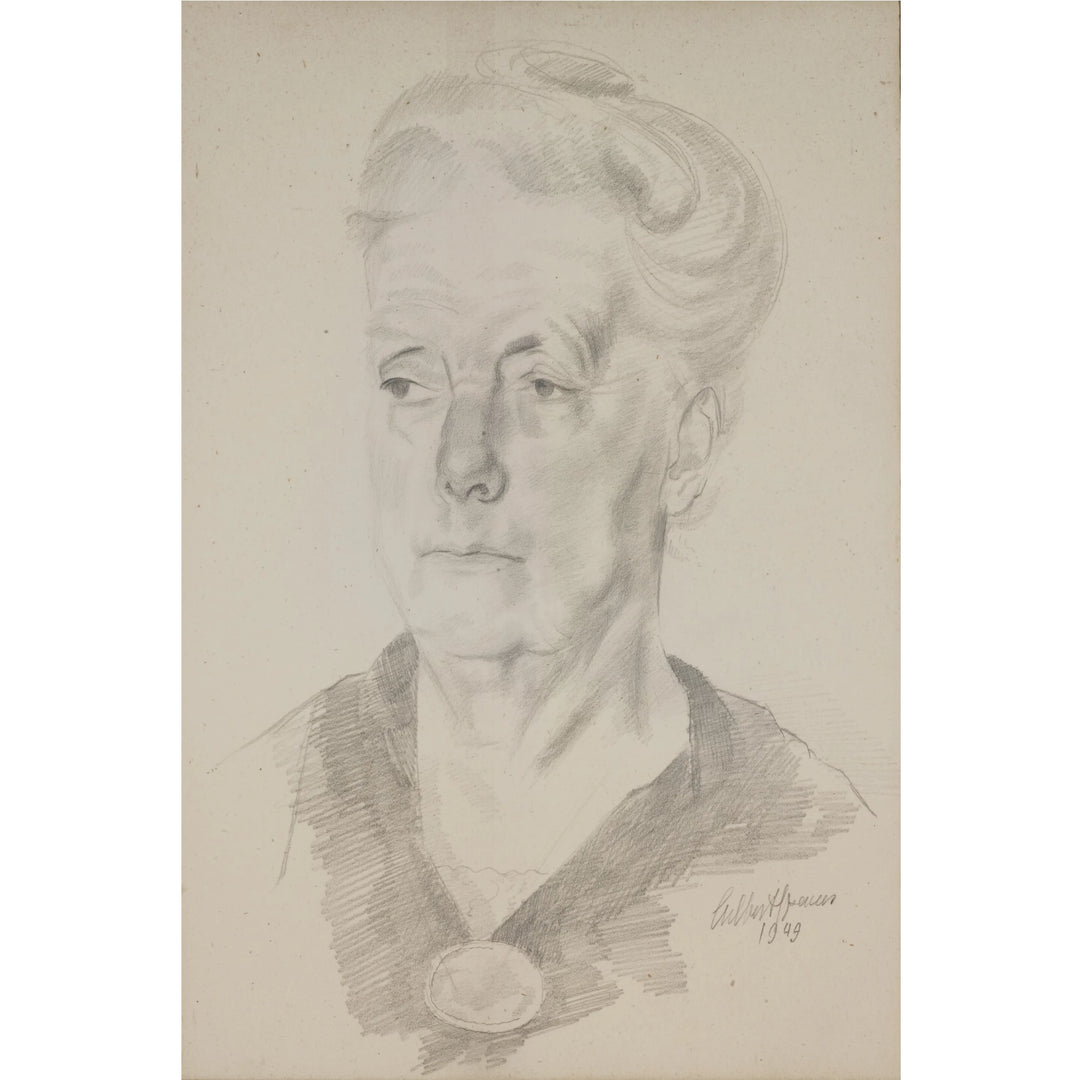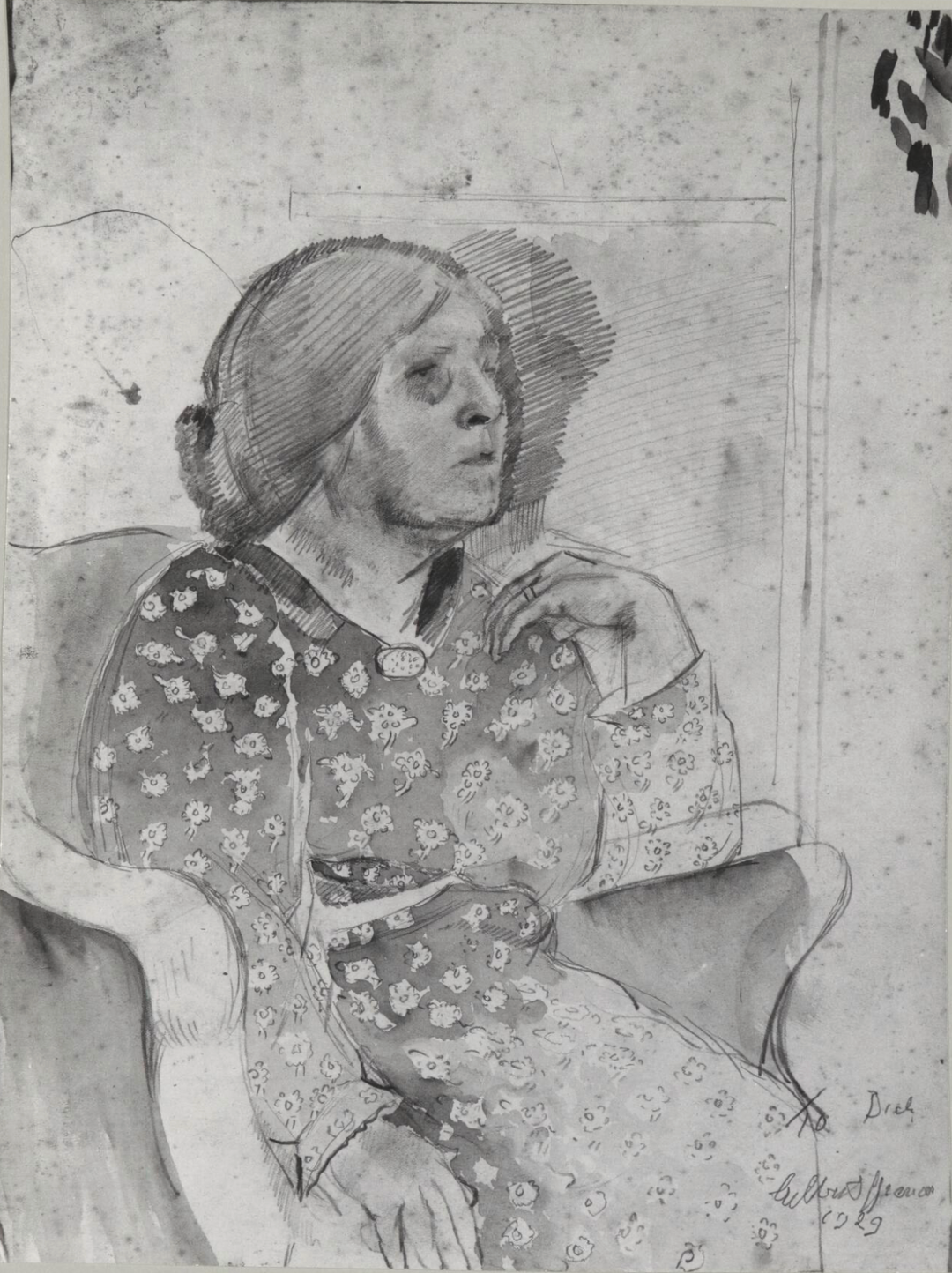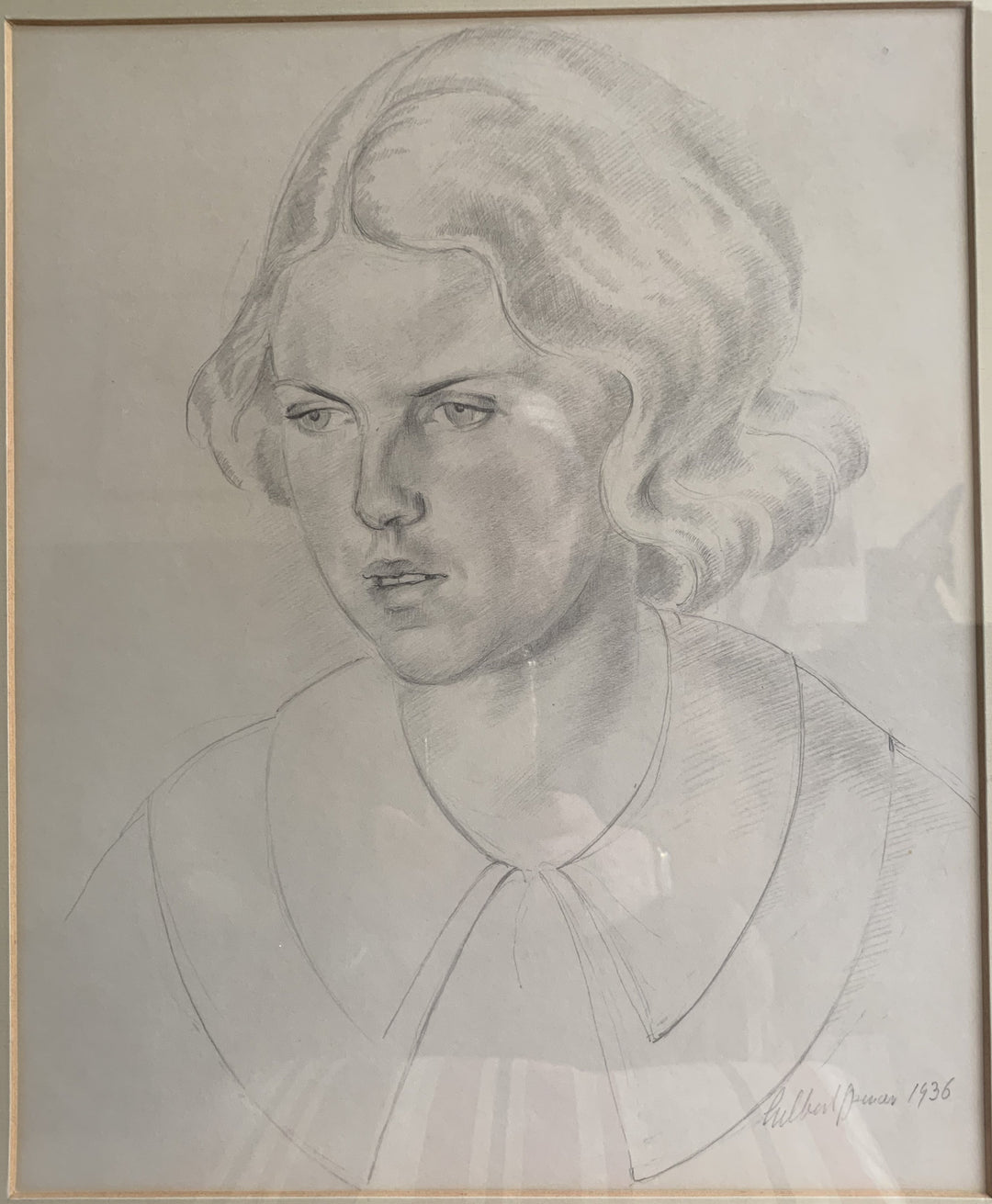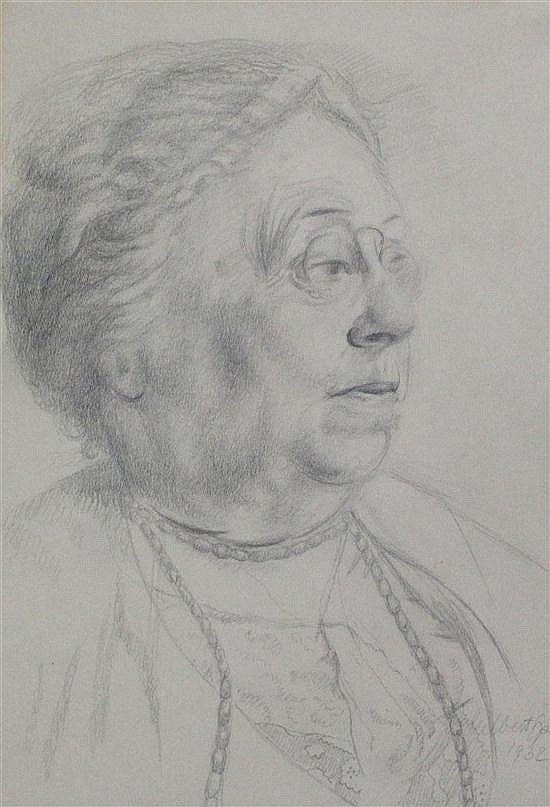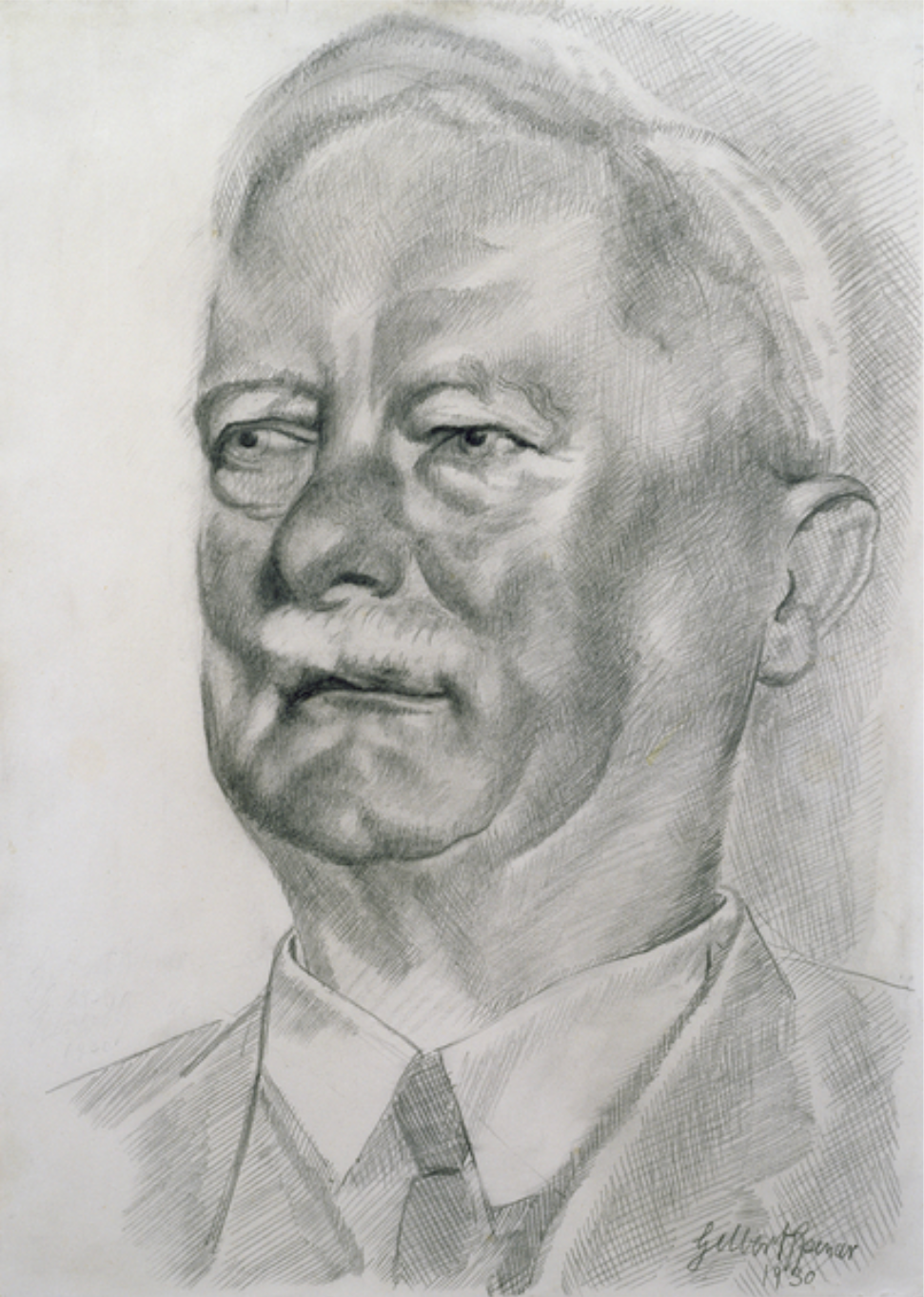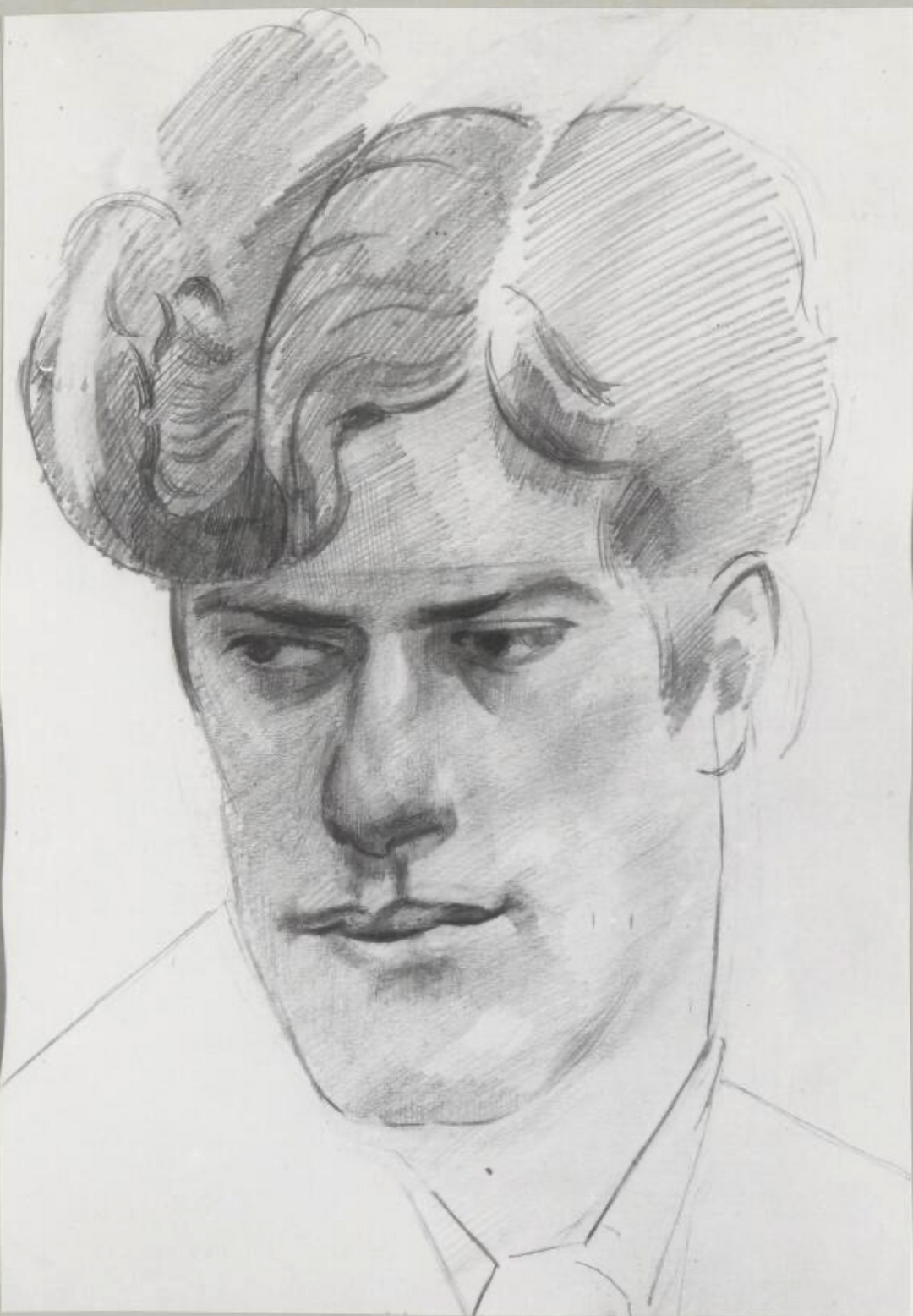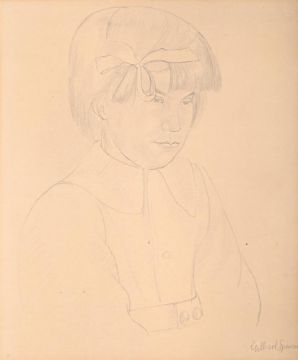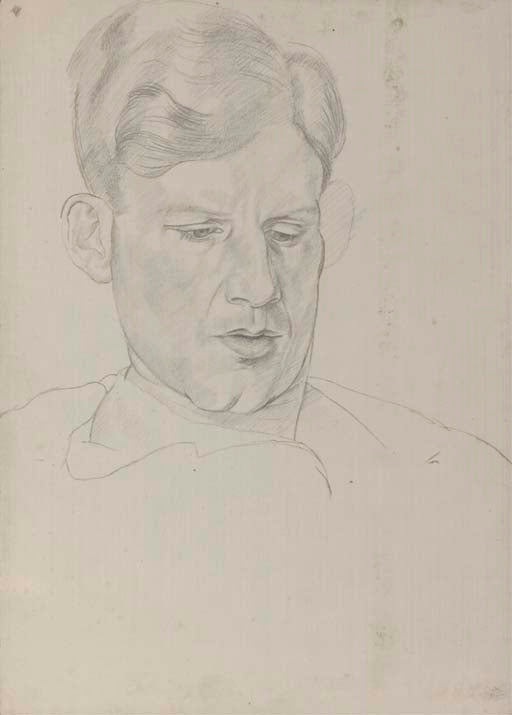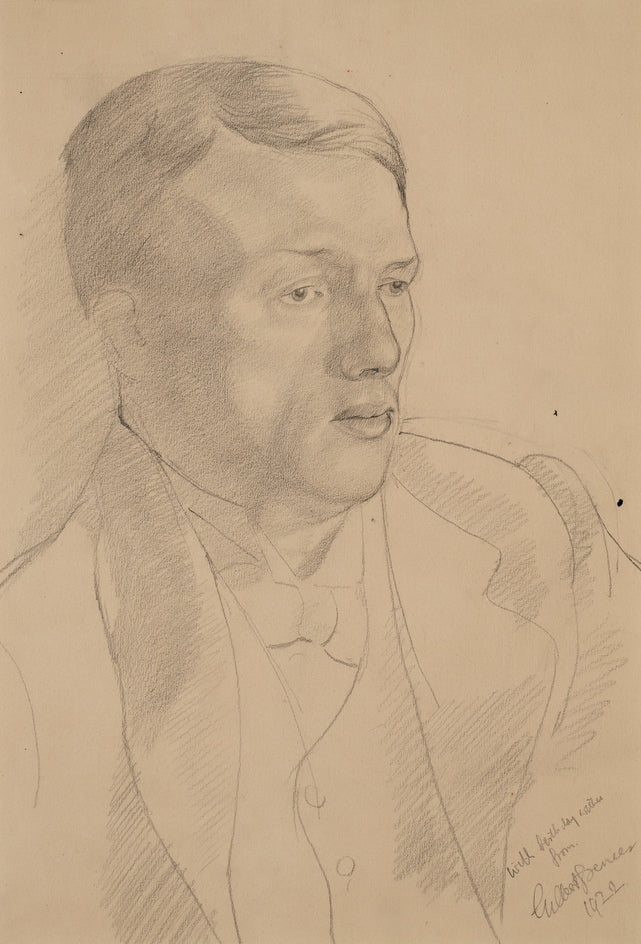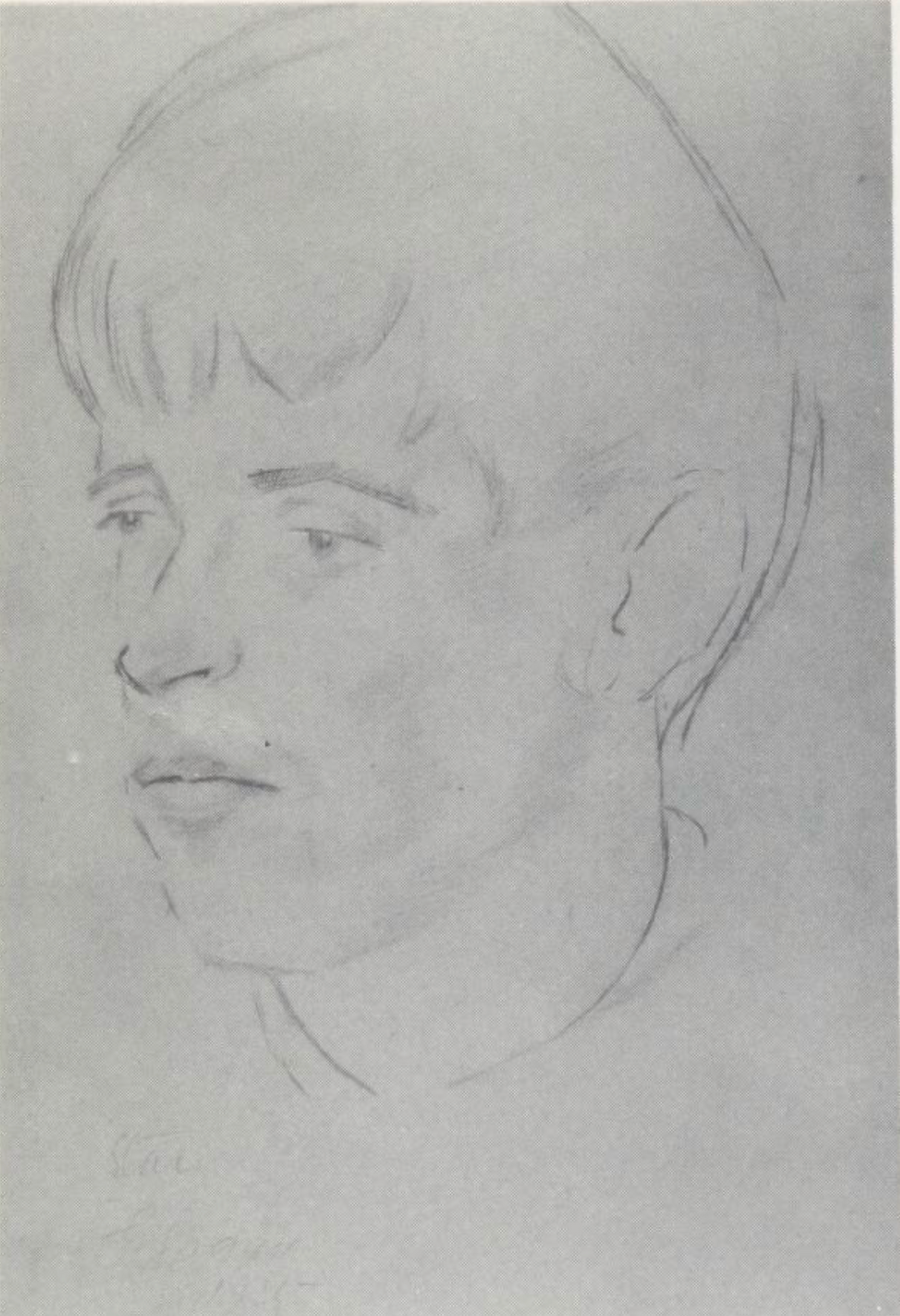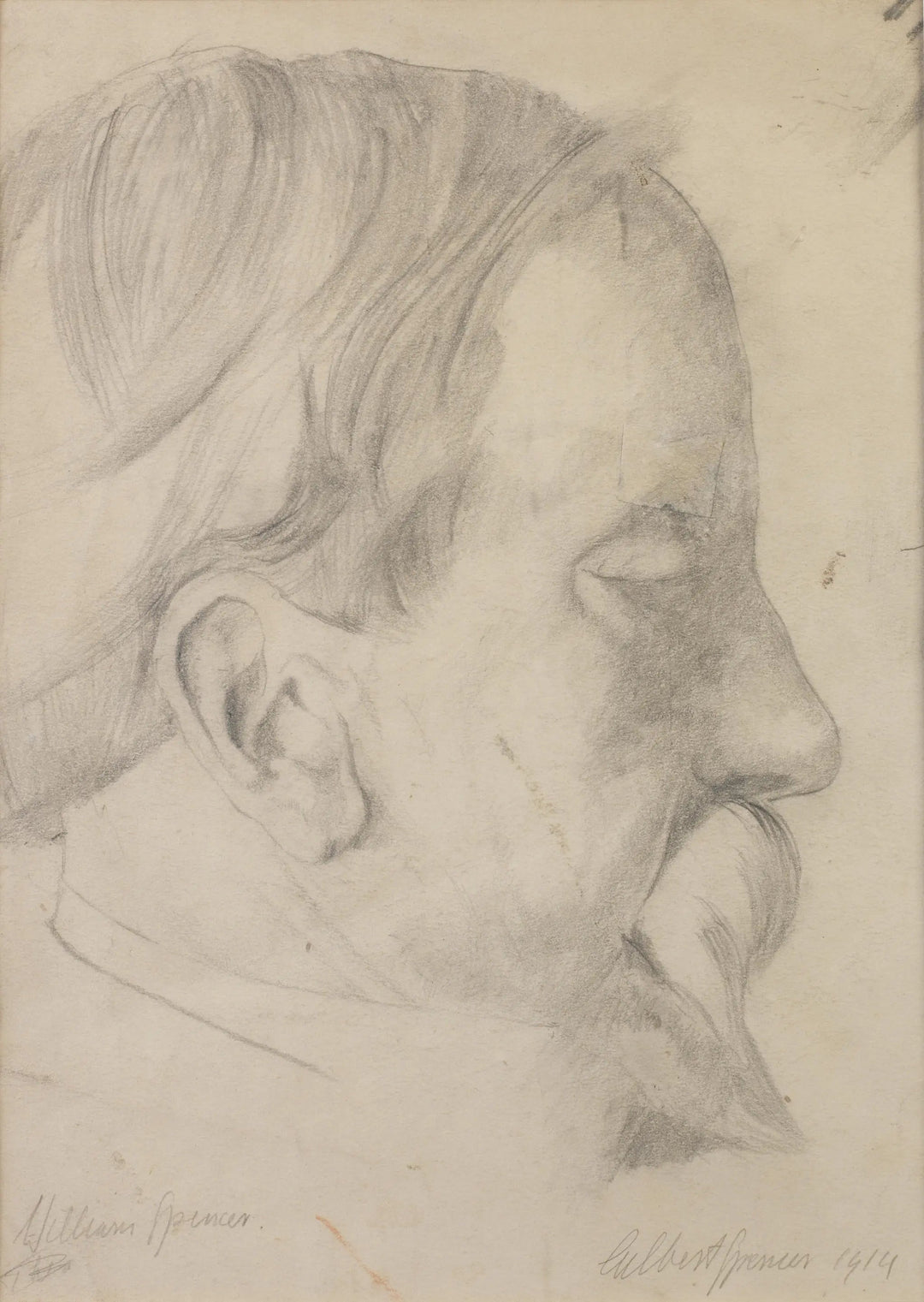Portraits in oils did not comprise a large proportion of Gilbert Spencer’s output, with around fifty known works. Nevertheless, he kept up a steady production of portraits of friends, family, the occasional commission, and an ongoing series of self-portraits. In the early years of his artistic development, portraits provided an opportunity to experiment with form and colour. They also give a sense of Gilbert’s interest in his subjects. Most of his sitters were known personally to him, and his portraits often convey the warmth of their relationship, as well as the sitter’s personality.
In the 1920s, Gilbert painted several portraits of women in his circle: sisters Doreen Harter (c. 1920s, private collection) and Gwen Harter in a Red Bead Necklace (1920, Ferens Art Gallery); Joyce Peters (1925-9, private collection; 1926, private collection); and Girl in Yellow (1920, private collection). The sitter is often seated in a half-length format, with solid, planar blocks of colour. After he met Ursula Bradshaw, whom he would marry in 1931, she sat regularly for Gilbert, as did their daughter Gillian once she reached young adulthood.
In parallel, he produced a series of portraits of working men and boys including Reading Boy (1923, Reading Art Museum) and Garsington Youth (1925, Victoria Art Gallery, Bath). He bestowed a quiet dignity onto his rustic sitters, especially The Rat Catcher (1922, Southampton City Art Gallery), which deploys the seated, full-length format conventional in portraits of civic dignitaries.
Gilbert received a few formal portrait commissions. They included fellows of Balliol College, Oxford, where he spent 1934-6 painting a mural scheme. Duncan Campbell Macgregor, Fellow of Balliol and University Lecturer in Greek History (1936, Balliol College) must have been an intimidating subject for what was one of his earliest portrait commissions. He developed something of a speciality in portraits of educationalists, including Rev E. Hayward, Headmaster of Monkton Combe (c. 1953, Monkton Combe School) and Miss Lillian de Lissa (1953, Kingston University). Judith Coventen (c. 1958, private collection), whose elegant and spare portrait was exhibited at the Royal Academy in 1958, was probably a friend rather than a formal commission.
We see Gilbert through his own eyes in the oil portraits he painted throughout his career, as well as numerous self-portrait pencil drawings. The earliest recorded, painted in 1911, is untraced, but Gilbert’s self-portrait of 1914 (Potteries Museum, Stoke on Trent) shows an uncertain young man who is only just emerging as an artist. Its full-frontal format is derived from his brother Stanley’s self-portrait, completed in July that year. But the jaunty pose of Gilbert’s self-portrait of 1928 (Tate) indicates a confident young man who has established himself socially and professionally. This self-confidence matured into the wry humour of Activity at Tree Cottage no. 2 (1967, Royal Academy of Arts), with its euphemistic title, and grand full-length pose at odds with its diminutive size. Gilbert quizzically raises an eyebrow, perhaps in reaction to his art-establishment status. Later that year, the Royal Academy would elect him a Senior Academician, and purchase the self-portrait for its collection.




